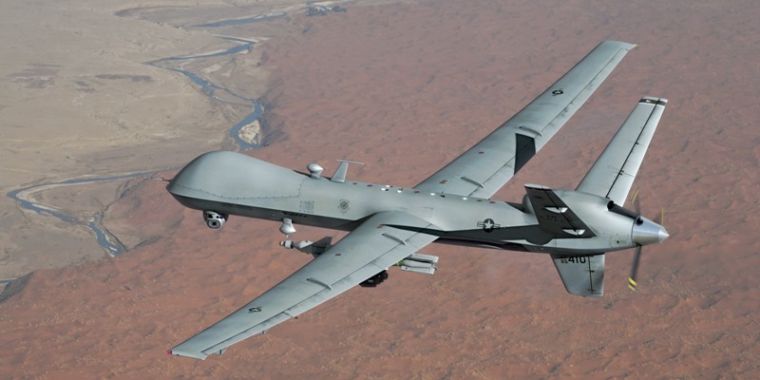
The US Air Force has revealed that an MQ-9 Reaper uncrewed aircraft successfully shot down a smaller drone with a heat-seeking air-to-air missile in a test last November. The details, provided by Col. Julian Cheater, commander of the 432nd Wing, came in an interview with Military.com at the Air Force Association’s Air, Space, and Cyber Conference in Washington, DC, yesterday.
The Air Force’s Air Combat Command has been exploring ways to arm the MQ-9 with air-to-air weapons since 2003. That was when the Air Force was preparing to issue a contract to General Atomics for the uncrewed aircraft, which was known at the time as the Predator-B. Much of the problem has been that the MQ-9, which is flown over a satellite communications link by Air Force operators, lacks the kind of sensors a fighter aircraft would use to track and target other aircraft. Its Lynx multimode radar is a synthetic aperture radar intended for tracking surface targets on land and sea and for providing ground imaging—but not for searching for other aircraft. Its other sensors (other than navigational cameras) were intended for tracking things below as well. And the MQ-9 lacks the sort of electronic-warfare sensors and countermeasures of crewed combat aircraft.
However, the Reaper’s Multispectral Targeting System (MTS) has proven to be usable for tracking some types of flying targets. In 2016, the latest version of MTS, the MTS-C, successfully tracked missile launches in a test conducted by the Missile Defense Agency. The MTS-C added long-wave infrared to the short and medium infrared wavelength sensors used in previous versions, allowing the sensor to track “cold body” objects.
Using communications with other aircraft and units in the area of operation, an MQ-9 crew could use the MTS-C to target an aircraft as well—and to orient the drone to fire an infrared-guided weapon at it. While the weapon used wasn’t discussed by Col. Cheater, it was likely a version of the Stinger missile that Raytheon recently upgraded to make more suitable for shooting down drones.
The Reaper has been busy over the past three years. Between January 2015 and August 2018, according to Air Force data, MQ-9 aircraft conducted 950 strikes, dropping or firing approximately 1,500 weapons. A large number of those strikes have been in urban areas in Syria, providing close air support for US and allied forces fighting ISIS. But MQ-9s have seldom operated in “contested” airspace, where enemies could put up aircraft to shoot them down. The addition of a heat-seeking missile to the Reaper’s load would give it at least some sort of self-defense option.
Be the first to comment